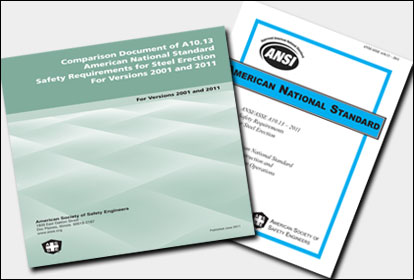As a construction professional, you’ll likely be in many different environments. While there’s plenty of work available in the cities, you never know when an opportunity could open up to work on a project in the agricultural sector.
It may seem like there’s not much to worry about when working seemingly in the middle of nowhere, but there are potential hazards you may not have anticipated. Whether you’re a foreman or part of a team, it’s essential that you plan ahead so you can stay safe until the project’s completion.
There are various hazards to consider. This checklist can prepare you for what’s ahead so you remain vigilant and end the job in the same condition as when you began.
Projects that could bring you to the agricultural sector
Various construction projects could introduce you to the agricultural sector. Many of these jobs will occur on farms as you build free-stall barns, equipment and manure storage areas, milking parlors, greenhouses, and everything in between. There are many farms nationwide, so these projects could keep you busy for years.
One of the many unique projects you could be called out for is the construction of barndominiums. As the name implies, this structure is a barn that’s used for farm work like the other barns on the property. However, there’s an additional space where someone can live. Many people like the idea of barndominiums because they’re affordable and durable. They are gaining steam, and you may be called out to build one.
While there's a lot of potential in the agricultural sector, these are not jobs to be taken lightly. At first glance, it may seem like a safe place to work, but the statistics show that farm work can be very dangerous. In 2012, 374 farmers and farm workers died from work-related injuries, and there’s a stark reality that the fatality rate for agricultural workers is seven times higher than for workers in the private sector.
However, while the work can be dangerous, you can prepare by staying informed about common threats and the precautions you can take to stay safe.
Common threats
The best way to ensure your safety is to prepare for hazards that can present themselves at any time of the day. Even commuting to the job site can pose issues if you’re not careful, especially when driving at night.
One of the challenges of driving late or very early in the morning is limited visibility. There are fewer street lights out in the country, so you will need to be vigilant behind the wheel. Avoid issues by turning on your high-beam headlights when there’s no oncoming traffic and wearing prescription frames if needed.
Nocturnal animals can also be an issue around farmland. With fewer buildings and people around, animals are more likely to roam, and they could dart into the road at a moment’s notice. If you’re not prepared and stop short, you could hurt your back or neck.
Another common threat that can happen at any time of the day is the potential to fall or hit your head on the ground or a piece of agricultural equipment. Without the proper caution, a concussion is a real possibility. If left untreated, a concussion could lead to bleeding or swelling of the brain.
That’s why it’s essential to know the symptoms of a concussion, which can begin with mild reactions like headaches and ringing in the ears. As time goes on, you could also experience nausea, dizziness, and temporary memory loss. It’s vital that you and your coworkers know how to identify a concussion so you can help each other. Just remember that symptoms may not show immediately, so stay aware.
Avoid the potential for concussions when working on agricultural operations by keeping ladders secure, ensuring that only authorized personnel work with potentially dangerous cranes and power tools, and working with caution near grain bins and silos.
Consider the elements
Working on a farm or in an open field creates some hazards you won’t face everywhere else, including excessive heat from May to October. Depending on the worksite, you may not have many places to go for shade or air conditioning, so you must be cautious of the potential for heat illnesses, like sunstroke or dehydration.
You can avoid the dangers of the sun by taking breaks throughout the day and having access to enough drinking water to keep you hydrated. You should also wear a hat and sunscreen to fight the effects of the sun.
A potential threat that’s typically exclusive to the agricultural sector, especially in California, is valley fever. It’s caused by the fungus that lives in previously undisturbed soil. Once the soil is disturbed by shoveling or land-clearing operations, the spores can become airborne and negatively affect the lungs.
Before working in an area that could have valley fever, check with the local county health department to ensure the land is safe. Also, management should train their staff on the symptoms of this and other airborne illnesses, including fever, skin lesions, and swelling.
Finally, if there are animals on the farm or nearby, be cautious of the possibility that you could come down with a zoonotic disease, which can be transmitted from vertebrate animals to humans. They include anthrax, rabies, leptospirosis, and more. You can work to avoid the potential of a disease by staying away from the animals on a farm unless you're asked or permitted to approach them.
General protections before starting work
The best way to stay safe on an agricultural job site is to have a plan of action before the job begins. Management should first conduct a risk assessment of the potential hazards on the site by speaking to experts and surveying the area. After identifying risks, determine potential solutions if an issue becomes a reality. Once the job begins, there should be safety meetings every morning before work to discuss the day's duties and how to avoid hazards along the way.
It’s also vital that everyone on the job site is provided with the necessary personal protective equipment to stay safe. Hard hats, gloves, safety goggles, and steel-toe boots may be required, so management must ensure everyone has what they need and knows how to use it properly.
Finally, create a culture of safety. Everyone on the job should have each other’s backs, and no one should be afraid to come forward to report a risk. Each potential issue should be taken seriously, and safety must be at the forefront of everyone’s mind. If you’re new to construction in the agricultural sector, speak to a professional to better grasp the situation at your job site.
Conclusion
When it comes time to start building and maintaining structures on a farm, field, or other agricultural site, there's a lot to consider. Learn the risks beforehand and have solutions lined up in advance so you and your team can work efficiently and without fear of injury.





